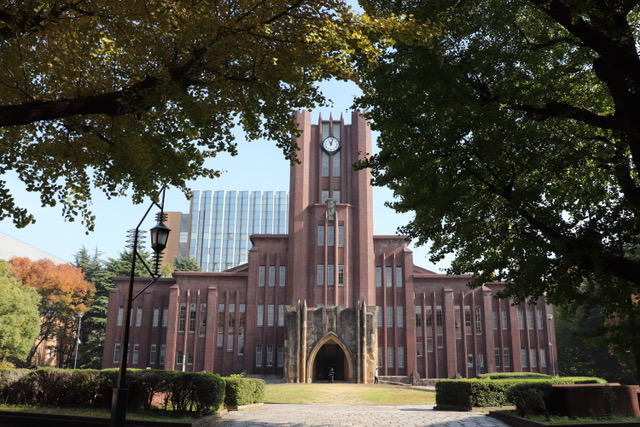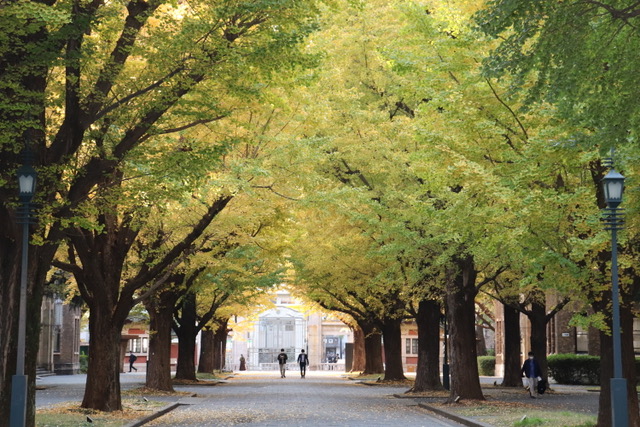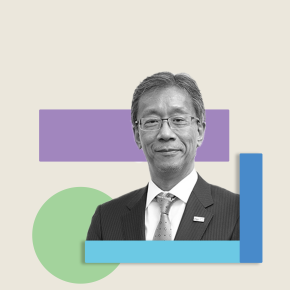
Interview: Teruo Fujii, President of UTokyo, on the creation of an international research centre with the CNRS
This year, the CNRS launched its third International Research Center (IRC), this time with Japan’s prestigious University of Tokyo, the country’s leading institution. Its president, Teruo Fujii, explains why this step is an important milestone for the two institutions, which already share a number of high-quality and interdisciplinary research projects.
You have just signed the creation of an International Research Center (IRC1
) with France’s CNRS. This new type of structure allows for an ambitious strategic dialogue to define common interests and collaborations with joint and co-financed projects. What do you expect from such a heightened level of cooperation?
Teruo Fujii: The number of International Research Laboratories (IRL2
) we have with the CNRS at the University of Tokyo (UTokyo) has seen a significant increase in recent years. With the creation of our fourth3
IRL and considering our various other collaborations, the creation of an international research center (IRC) as a university-wide umbrella structure is a natural next step. At the Second Strategic Dialogue between the CNRS and UTokyo, it was established that this IRC would provide a framework for sharing views on a range of topics not specific to any one field. For example, we can share efforts in areas where actions can be taken together, such as in Diversity and Inclusion (D&I). I also hope that we will be able to expand our collaborations into the humanities and social sciences, as well as in other new scientific fields. Being able to train and nurture PhD students within this framework is a wonderful opportunity.

The University of Tokyo already has strong links with French research, and the CNRS more particularly.
T. F.: Indeed, the University of Tokyo has a long history of collaboration with institutions in France. Our relationship with the CNRS started in the 1990s, when a delegation led by Jean-Jacques Gagnepain4
visited our Institute for Industrial Science (IIS) as a possible partner in the field of micro-electro-mechanical systems (MEMS). The Director General of IIS at that time, Fumio Harashima, had a very global outlook, and that led to the creation in 1995 of the Laboratory for Integrated Micro-Mechatronic Systems (LIMMS) with the CNRS. The LIMMS initially existed as a joint research project, but became in 2004 the first IRL in Asia. Since its launch, the LIMMS has hosted more than 300 scientists from France and elsewhere in Europe.
The approaches to research in France and Japan are different. And these differences complement each other, making it possible to carry out highly-competitive research. They also make us more receptive to interdisciplinarity. I was actually co-director of the LIMMS between 2007 to 2014, and during that time, the interdisciplinary nature of research significantly increased, with chemistry and biology becoming proactively involved. Our collaboration with the CNRS grew accordingly.
With these additions, the LIMMS was able to expand into wider areas, including medical fields. Examples include the mirror structure of the LIMMS located in Lille, called Seeding Microsystem in Medicine in Lille – European-Japanese Technologies against Cancer (SMMIL-E), a comprehensive anticancer research program on microsystems for biology and health (bioMEMS), and innovation in liver tissue engineering (iLite), a project focused on bioconstructing artificial livers through the assembly of separately built components such as liver organoids, vascular networks, and biliary networks. In addition to these, we have also expanded into photovoltaic devices, solar energy, and other green technologies.
The establishment of an organization that allows both short-term and long-term exchanges of researchers, from students to full professors, is extremely beneficial. Ecosystems like the LIMMS, make it possible for researchers to take what they have learned back to their original laboratories, where they can further expand their knowledge to develop new ideas.
You have recently taken the helm of the University of Tokyo, one of the most prestigious universities in Japan. It often acts as a beacon in terms of policy for the entire country in regards to research and education. What are the main objectives of your mandate, and what are the main challenges facing the world of research in Japan ?
T. F.: I have long believed that globalization is very important for the Japanese research community, and our collaboration with the CNRS makes this even clearer. In particular, it is important that young researchers, especially PhD students, acquire international experience. The increased presence of IRLs in Japan, not just at UTokyo, benefits us all. If possible, they should be further expanded, and UTokyo would very much like to join other IRLs in the future to make that a reality.
Japan as a whole has to work harder to increase the number of students advancing to study for their doctorates before pursuing their careers. To achieve this, it is important to increase the opportunities for internationalization and interdisciplinarity, and enable students to better see how this will impact their future careers. An increase in universities’ collaboration with industry is thus crucial, given that its challenges and activities are intrinsically international and interdisciplinary. Strengthening our collaboration with industry will also support our efforts to improve diversity and inclusion. Similarly, our collaborations with the CNRS will also lead to further collaborations with global companies and international organizations in areas of shared concern, such as D&I and the climate crisis.

Last September, you released a statement explaining the guiding principles of UTokyo. Can you tell us more about it?
T. F.: In this statement, called “UTokyo Compass”, we describe the ideals to which our university should aspire and the directions it should take. We set goals and formulate action plans from three perspectives: knowledge, people, and places. By creating a virtuous circle between these three perspectives, UTokyo strives, as a university that serves the public trust, to nurture diverse and talented individuals and find solutions to the key global issues. UTokyo Compass thus charts a new course for us as an organization willing to question its possibilities and radically reimagine itself. It also challenges both the university to put its extensive creative powers to the test and the society at large to which we belong.
One of the most important things to me is constructive dialogue, to assess the needs and build the future. By dialogue, I mean the act of trying to understand, not merely talking or exchanging information. In order to tackle complex global issues such as the sustainability of our planet’s finite resources, it is essential for us to try to understand different cultures and values.
The research that UTokyo jointly carries out with the CNRS creates ‘a polyphonic symphony, powered by scientists with diverse backgrounds and experiences. I hope that the collaborations between our two institutions will move our objectives, and science in general, further. And there is no doubt that the dialogue we will have through the IRC will help us find better solutions to the far-reaching challenges of today and tomorrow.
- 1The CNRS already launched three IRC, with the University of Arizona in 2021 and Imperial College London and the University of Chicago in 2022.
- 2These tools structure in an identified place the significant and lasting presence of scientists from a limited number of French and foreign research institutions (only one foreign partner country).
- 3DYNACOM (Dynamic Control of Materials) was created on 4 October 2022 between CNRS, University of Rennes-1 and the University of Tokyo.
- 4Jean-Jacques Gagnepain was Scientific Director of the CNRS Department of Engineering Sciences from 1991 to 2001.


